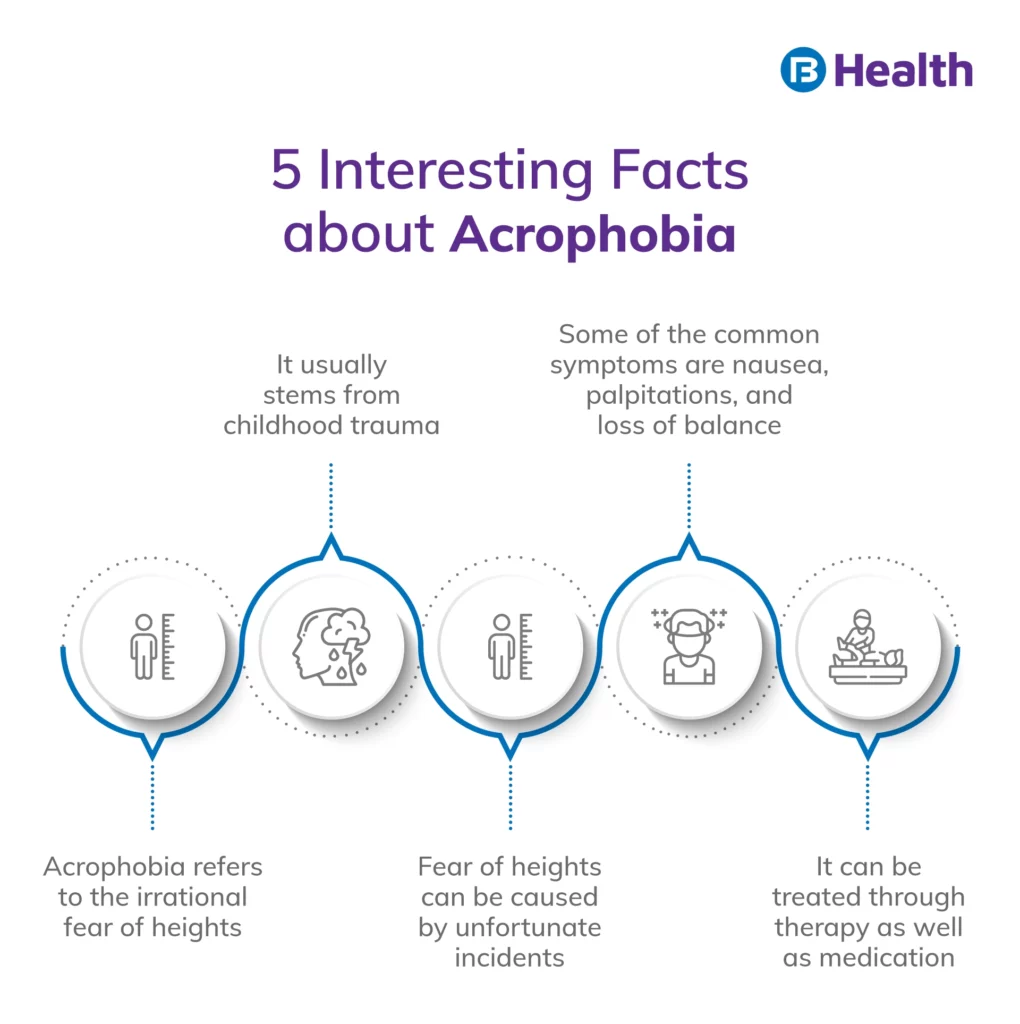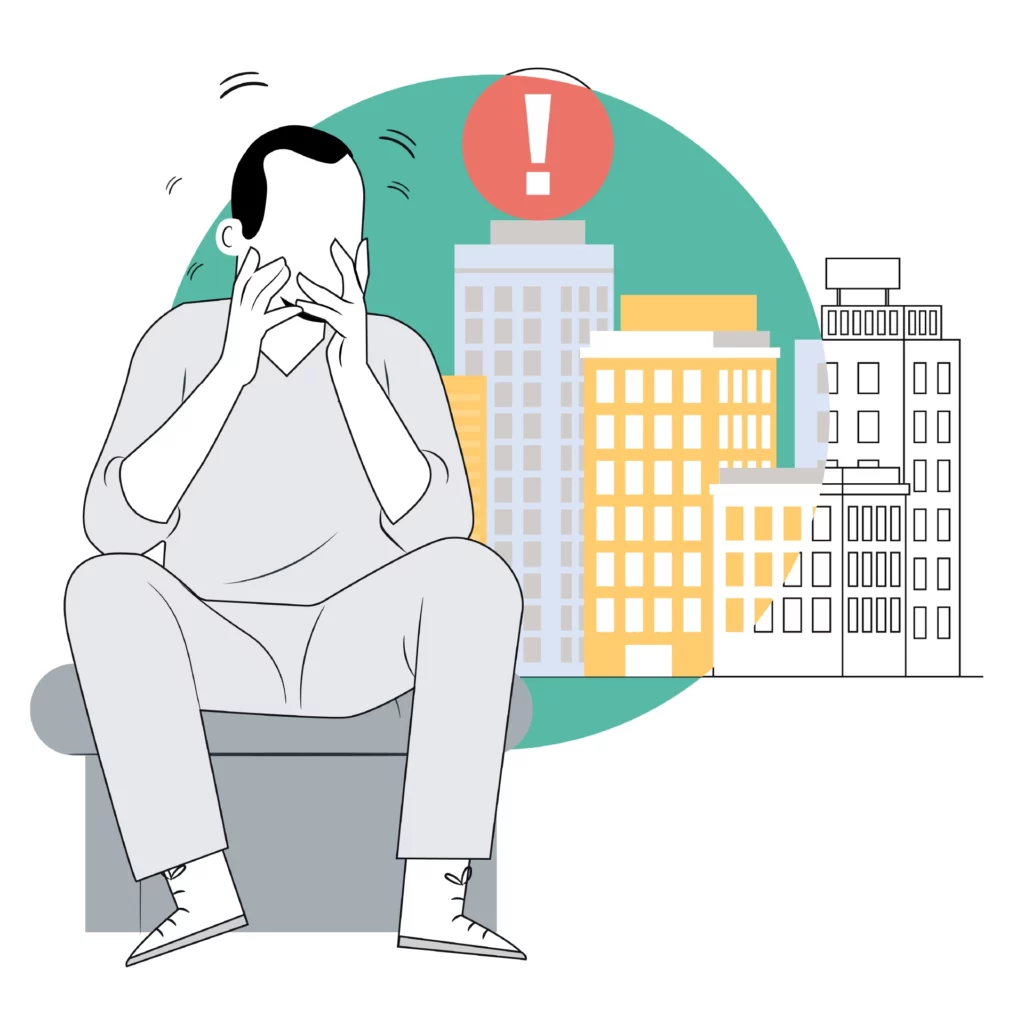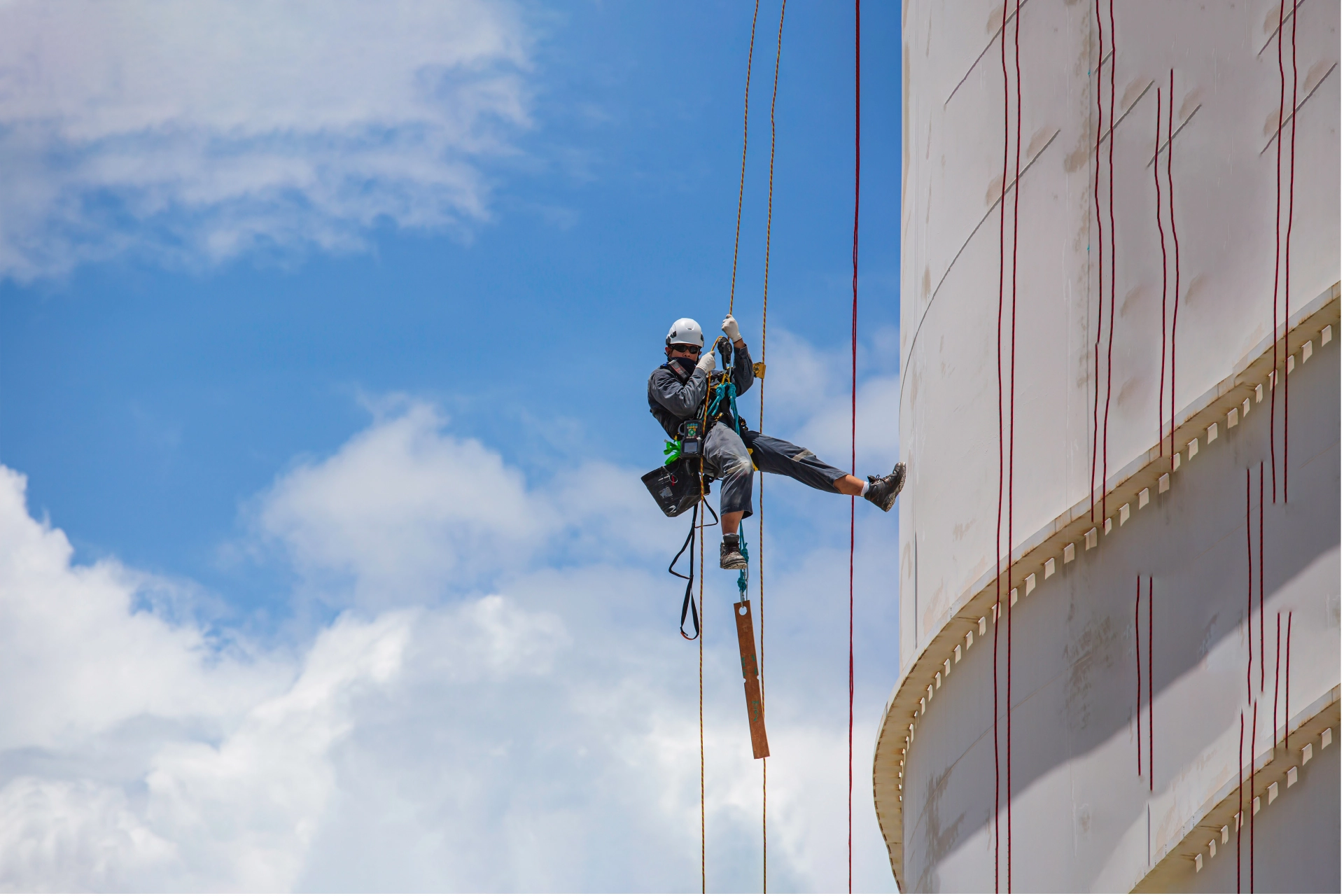General Health | 7 min read
Acrophobia (Fear of Heights): What is It and How to Treat It
Medically reviewed by
Table of Content
Synopsis
Several reasons can cause Acrophobia, a mental disorder of fearing heights. It is very important to identify and treat it as it can affect one's life adversely. Mental health professionals use different methods like Exposure therapy and others to treat this disorder.
Key Takeaways
- Acrophobia usually develops in childhood and can affect anyone
- Factors like trauma can also be a cause for this phobia
- Medications, CBT, Virtual reality, etc., are a few Acrophobia treatment methods
A certain degree of fear of heights is natural for everyone, and most people are more careful than normal when they reach a considerable height. When looking down from a high point, many may feel nervous or a little wobbly. But, many who have Acrophobia suffer extreme and irrational fear when they are around heights, even during routine activities like parking a car in a multi-story parking garage, standing next to a balcony, or descending a flight of stairs.
Acrophobia Definition
Fear of heights is called acrophobia. This mental health condition causes an extreme fear of heights in the sufferer. It is classified as an anxiety disorder. When confronted with tall heights or positioned at a considerable height, a person who has Acrophobia feels extreme fear and anxiety. They frequently avoid situations or locations involving heights.
As an example, when you gaze down from the top floor of a building, you might experience dizziness or nervousness. However, these sensations may not cause panic or make you evade heights altogether. If you fear heights, the mere thought of traversing a bridge or looking at a picture of a hill and its surroundings can make you feel anxious and fearful. Usually, this distress is severe enough to interfere with your regular life.
Who is Most Likely to Have Acrophobia?
Fear of heights, like other phobias, can affect people of all ages. Children have a higher likelihood of developing Acrophobia, which may only manifest in adolescence and early adulthood.

What Causes Fear of Heights
Fear of heights has no single cause, although researchers have come up with several hypotheses for the causes of Acrophobia:
Evolutionary
According to evolutionary theories of phobias, some things that could be dangerous are naturally feared by people. In this situation, the threat of height-related fatality exists. According to evolutionary theorists, the fear of heights phobia could therefore be innate.
Behaviorist theories
According to behaviorist views, phobias result from a person's interactions with their surroundings. For example:
- Observation: A kid who witnesses their parents or other adult caregivers having a fear of heights might also experience that fear
- Trauma: An individual who has experienced a traumatic event involving heights or who has watched one may become acrophobic
- Classical conditioning: If someone has a horrible experience, like falling from a tree, they might link heights to that experience. The individual subsequently comes to identify heights with falling, which makes them fearful the next time they encounter a comparable circumstance.
Acrophobia: Early Signs
If you suffer from Acrophobia, you'll probably start to fear circumstances where you might have to spend time up high. For instance, you may be concerned that your next vacation will place you in a hotel suite on a high floor. For fear of utilizing a ladder, you could put off doing home maintenance. If your friends' homes have balconies or picture windows upstairs, you might avoid going there.
Your ability to conduct daily activities normally may be hampered by this avoidance. For instance, you can have such intense dread and avoidance that you are unable to go to work or school, see friends, or even leave your house.
What Triggers Agoraphobia(Fear of Heights)?
Fear of heights has a comparable emotional and physical impact as other phobias. The most common acrophobia symptoms include:
Emotional Symptoms
When you believe you are elevated above the ground, you could experience a feeling of panic. You may intuitively seek something to hold on to and discover that you find it difficult to rely on your own feeling of balance.
Physical Symptoms
Similar to other particular phobias, Acrophobia or fear of heights has physical symptoms that include:
- Chest pain
- Dizziness
- Nausea
- Rapid heartbeat
- Breathing difficulty
- Trembling
Additional Read: Treatment of Asthma

Best Treatment
Specific phobias can be effectively treated using a range of therapies. Certain forms of therapy, like virtual reality and vestibular physical therapy, have been specially investigated in relation to acrophobia treatment.
Exposure Therapy
The most successful and extensively researched treatment for certain phobias is exposure therapy.
- The goal of exposure therapy is to expose a patient to fearful stimuli. In the past, this exposure was carried out in person, which for Acrophobia might entail standing on a roof or cliff edge
- Flooding is a type of exposure therapy in which a patient is subjected to their greatest fear all at once. This therapy can be given progressively over a number of sessions
- A qualified mental health practitioner is present during this therapy. The objective of exposure treatment is to eliminate the fear reaction by exposing a patient to their feared situations in a secure setting. Habituation and self-efficacy are used to accomplish this
Behavioral and Cognitive Therapy (CBT)
If you don't feel ready to undertake exposure therapy, CBT could be able to help. With the help of a therapist, you'll use CBT to confront and reframe negative perceptions about heights. This method could still involve some exposure to heights, but it usually only happens during treatment sessions, which are safer conditions.
Medication
There are no drugs specifically made to treat phobias. The following medicines, however, can aid with anxiety and panic symptoms:
- Beta-blockers: These medications assist by lowering other bodily signs of anxiety as well as maintaining your heart rate and blood pressure constant
- Benzodiazepines: They are sedative drugs. They can aid in reducing anxiety symptoms, but due to their potential for addiction, they are usually taken briefly or occasionally
- D-cyclomerize (DCS): This drug might enhance the advantages of exposure therapy
Virtual Reality
Exposure treatment has also been researched using virtual reality techniques in recent years. Before introducing someone to the stimuli in real life, virtual reality offers more options for evaluating the exposure. Acrophobic people may start by seeing pictures of heights using a VR headset to recreate situations at heights.
Vestibular Physical Therapy
Vestibular disease may cause fear of heights in some people. [1] As a result of the vestibular system's impairment, those with this condition rely more on visual cues to keep their balance.
A person's vestibular system is rehabilitated, and compensatory balance-promoting techniques are developed through vestibular physical therapy. In addition to lowering the chance of falling, this therapy may also lessen phobias related to falling.
Additional Read: Autumn AnxietyHow is Acrophobia Diagnosed?
Only a mental health specialist can make the diagnosis of phobias, including Acrophobia. You might ask your general physician to recommend a psychiatrist to you. They can aid in making the diagnosis.
They'll probably ask you to explain what happens when you're confronted by heights. Mention any further symptoms of mental health you may have encountered and the duration of your fear. Acrophobia is typically identified if you:
- Avoid heights actively
- Spend much time worried about coming across heights
- Begin to see how your daily life is being impacted by worrying about this
- When confronted with heights, you immediately experience fear and anxiety
- Experiencing these symptoms for longer than six months
Side Effects
Only a few of those who have specific phobias, such as Acrophobia, seek therapy because many evade the situation they are afraid of.
- A person's life can be significantly affected by a fear of heights. In addition to the distressing panic reaction that occurs when exposed to heights, trying to avoid heights can be quite restrictive and can result in functional incapacity for some people
- Fear of heights can make it harder for you to carry out regular chores like walking across a bridge or climbing a set of stairs, which can negatively impact your quality of life
- You may also get a panic attack while at a high elevation, such as climbing stairs [2]
- Acrophobics who refuse treatment have a twofold increased risk of developing depression or a generalized anxiety disorder unassociated with their particular phobia
- In addition to the distressing panic reaction that occurs when exposed to heights, trying to avoid heights can be quite restrictive and can result in functional incapacity for some people
Acrophobia is the fear of heights, and it is among the most typical phobias. If you are suffering from a fear of height and discover that you dodge particular situations or obsess about how to dodge them, it may be time to see a therapist.
A therapist can assist you in developing techniques that will enable you to conquer your fear and keep it from interfering with your daily life. You can get a doctor consultation from Bajaj Finserv Health to know more about Acrophobia and treat it if you suffer from the condition.
References
- https://academic.oup.com/ptj/article/85/5/443/2805024#:~:text=Specifically%2C%20patients%20with%20vestibular%20or,often%20report%20fear%20of%20heights.&text=This%20fear%20tends%20to%20be,motion%20discomfort%E2%80%9D%20(SMD).
- https://explorerchick.com/journal/how-to-deal-with-anxiety-high-elevation-hike/
Disclaimer
Please note that this article is solely meant for informational purposes and Bajaj Finserv Health Limited (“BFHL”) does not shoulder any responsibility of the views/advice/information expressed/given by the writer/reviewer/originator. This article should not be considered as a substitute for any medical advice, diagnosis or treatment. Always consult with your trusted physician/qualified healthcare professional to evaluate your medical condition. The above article has been reviewed by a qualified doctor and BFHL is not responsible for any damages for any information or services provided by any third party.





